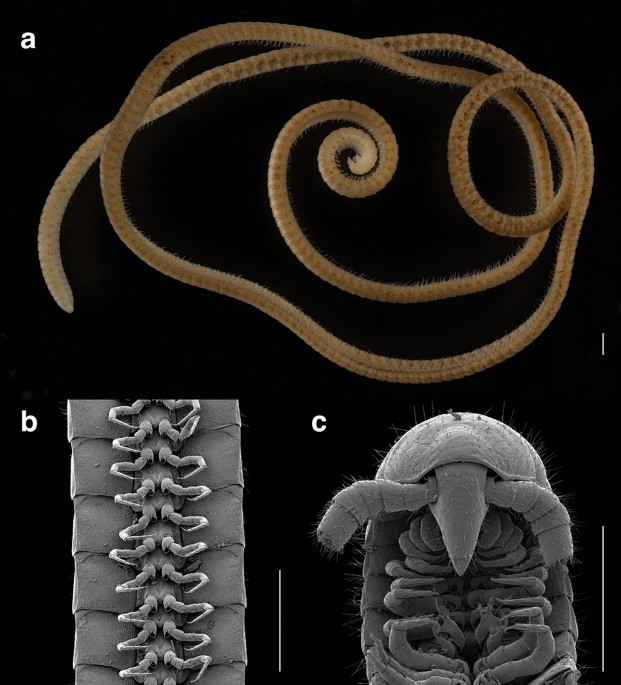
The first true millipede—1306 legs long - Scientific Reports
The name “millipede” translates to a thousand feet (from mille “thousand” and pes “foot”). However, no millipede has ever been described with more than 750 legs. We discovered a new record-setting species of millipede with 1,306 legs, Eumillipes persephone, from Western Australia. This...

Eumillipes - Wikipedia
330 segments, 1306 legs, one specimen examined was 95.7 mm long and just 0.95 mm wide... The species got the name Eumillipes persephone - Eumillipes meaning "true thousand legs"...
It's clear that such a body shape can be beneficial only in very special environments. From the nature.com article:
In the case of E. persephone, and its micro-cavernous habitat, the remarkable number of legs may be associated with a comparable search for limited resources in its "micro-cave"-like interstitial habitat. Short legs are likely advantageous in the small cavities of such a habitat, and perhaps compensated for by an increase in their number, which would maintain pushing power.
How many extreme, almost impossible things are waiting to be discovered under the surface?
It's sad that underground ecosystems could be just as threatened by climate change, pollution, mining and other factors. How many wonders will be destroyed before they are discovered?Invertebrates that live below the Earth's surface comprise a cryptic and diverse fauna. Although they are challenging to observe and document, notable recent discoveries include beetles and millipedes in Brazilian iron ore caves27,28, snake millipedes of mesovoid shallow substratum of Spain29, and spiders from caves of the Edwards Plateau of Texas30. These habitats are repositories of incredibly rich, but obscure biodiversity.